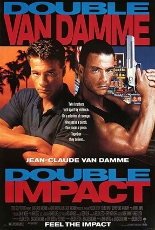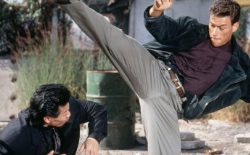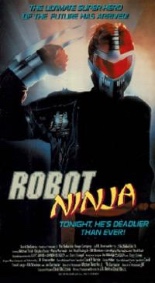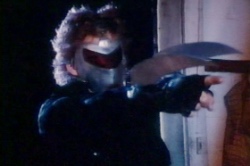
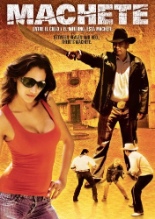 From the opening scenes featuring a middle-aged man with a machete cutting the throats of a few vatos playing a crooked game of dice, this Machete looks very much like a homegrown copy of that Machete, even if this was strangely filmed a few years earlier.
From the opening scenes featuring a middle-aged man with a machete cutting the throats of a few vatos playing a crooked game of dice, this Machete looks very much like a homegrown copy of that Machete, even if this was strangely filmed a few years earlier.
However, as soon as this Machete finds an adorable, Walter Keane-styled lad in need of a family getting beaten up by locals, it’s here where the film veers off into a somewhat violent tale of spiritual love as the possibly Heavenly Kid and a group of irreligious area thugs battle for the soul of Machete.
With a healthy appetite for tequila — Antigua Cruz, straight from the obtuse bottle — Machete, also known as Lukas, an ex-bodyguard for the president, wanders the desert, stopping by the small town of Purgatory — to hell with subtlety, I suppose — for reasons that are unclear and remain unclear. Either way, he causes trouble with the same three locals throughout the movie, swinging a flimsy machete around like a 5-year-old who’s just seen Conan the Barbarian.
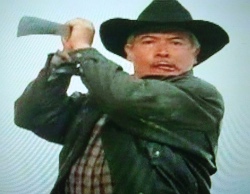 Meanwhile, as a young girl and her “gypsy” mother are harassed by those same three locals, a gringo from Machete’s past — back in Vietnam, apparently — is looking for him, ready to take him back to Arizona, “dead or alive.” While they all impatiently come together for the climax, as the film tries to tie all the loose ends together at once, complete with Machete being shot to death.
Meanwhile, as a young girl and her “gypsy” mother are harassed by those same three locals, a gringo from Machete’s past — back in Vietnam, apparently — is looking for him, ready to take him back to Arizona, “dead or alive.” While they all impatiently come together for the climax, as the film tries to tie all the loose ends together at once, complete with Machete being shot to death.
Only he’s not. I think.
With guardian angels, familial intrigue and a white dude machete training montage in the desert, writer and star Pablo Esparza — who I do hope that I’m related to on my maternal side — does what he can on this zero-budget actioner, even if very little of it makes any sense which, of course, makes it incredibly entertaining.
At the very least, I hope they got a few bucks from the Antigua Cruz sponsorship. It’s in this flick so much, I’m surprised that bottle didn’t get a producer’s credit. —Louis Fowler

